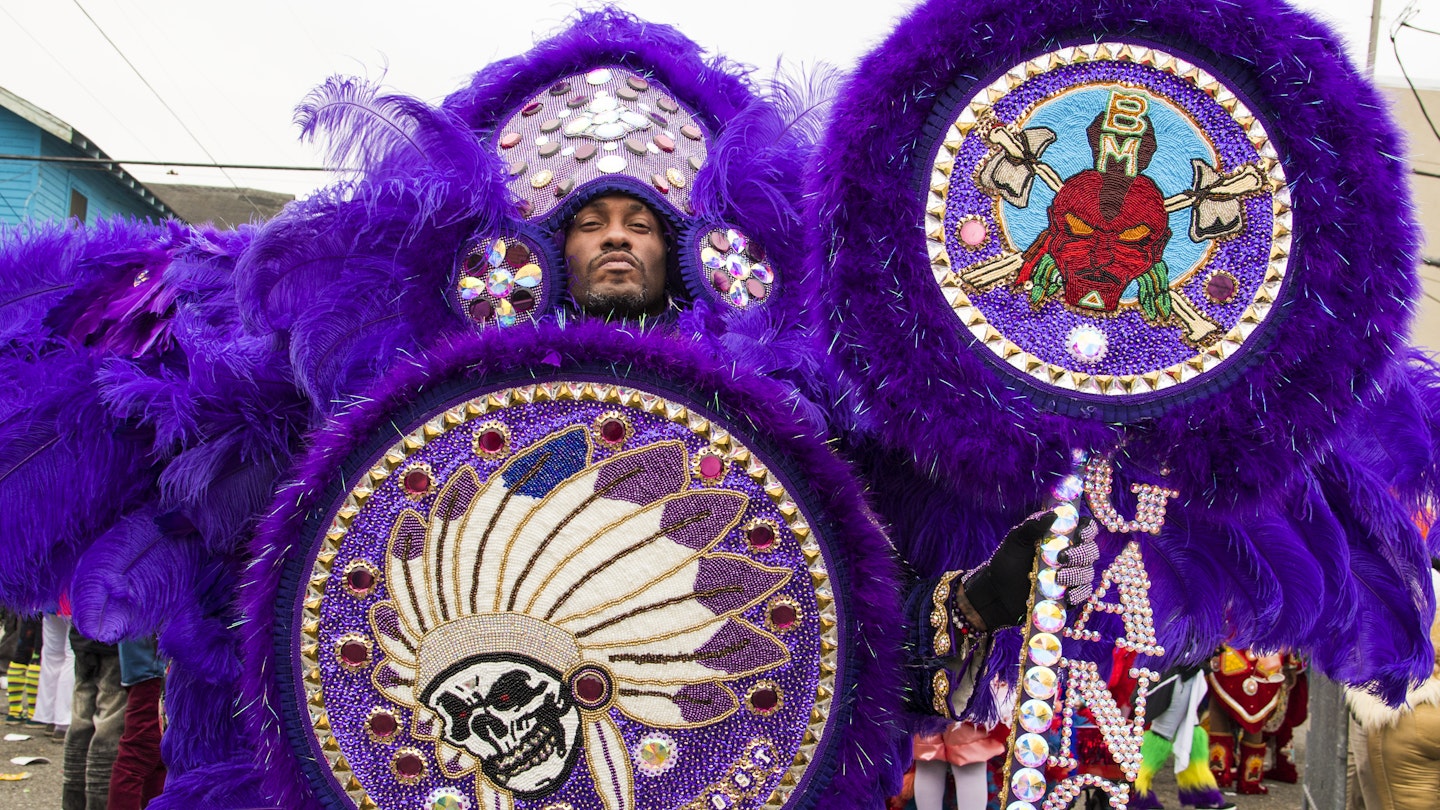Mardi Gras: The Ultimate Celebration Guide
When that first strand of beads hits you in the head, you know you’ve arrived at Mardi Gras. Garish floats, masked strangers, marching bands, and throngs of revelers invade your space. For newcomers, it’s easy to feel overwhelmed by the chaos. However, that first string of low-flying beads? Consider it your invitation to join the fun. Our advice? Accept the beads, embrace the mayhem, and laissez les bon temps rouler.
The Saga of a Celebration
Springtime hedonism has its roots in early pagan traditions and fertility rites, where uninhibited behavior was followed by a period of civilized restraint. The Catholic Church institutionalized these rituals, establishing a season of feasting before the start of Lenten fasting on Ash Wednesday. The term carnevale comes from a late Latin expression meaning “farewell to the flesh,” essentially representing one long farewell to your dinner. The final day of festivities is known as Mardi Gras, or “Fat Tuesday.”
In New Orleans, early generations of Creoles celebrated carnival season with organized masquerade balls. Beyond the walls of these private society dances, masked revelers would continue the party in the streets. Today, this tradition is preserved, with private society balls and public parades filling the pre-Lenten calendar.
The first New Orleans float made its debut in 1857 when a group of affluent and secretive Anglos, calling themselves the Mistick Krewe of Comus, paraded through town on floats illuminated by flambeaux (torches). In the ensuing years, new parade clubs formed, and they too dubbed themselves “krewes” — an intentional misspelling of “crews.” Today, over 50 parades wind through New Orleans during carnival season, featuring floats that celebrate themes chosen by the krewe, spotlighting Greek, Roman, and Egyptian mythology as well as historic events and modern cultural touchstones.
Choose Your Krewe
Most krewes share a collective love for celebrations, parades, and royalty, with kings, queens, and other royal courtiers waving to the crowd from magnificent floats. What adds allure? The unique, sometimes eccentric, personalities of the various krewes and their free trinkets, referred to as throws, which are tossed to the crowd.
Established in 1872, Rex is regarded as the king of Mardi Gras, with his entourage being one of the oldest parading krewes in New Orleans. The Krewe of Rex created the gold, purple, and green color scheme that is still embraced today. For generations, Rex and other long-established krewes, like Proteus, have existed as secret societies composed of the city’s most powerful men.
The roaming Mardi Gras Indians, organized by the city’s black community, appeared in the mid-1880s. Their elaborate feathered costumes honor Native American traditions. Another black krewe, Zulu, joined the festivities in 1909. Iris, established in 1917, is the oldest of the all-women krewes. The all-women Muses held their first parade in 2001. Check out their sparkly throws – including some very elaborate footwear.

The flashy super-krewes – Bacchus, Endymion, and Orpheus – formed in the last 50 years. These massive party machines radiate glitz, featuring celebrity guests, marching bands, dozens of floats, and over 1000 riders each. Look for their parades on the Saturday, Sunday, and Monday nights leading up to Fat Tuesday.
“Walking krewes” are grassroots parades with humorously narrow themes. Don a costume and join these quirky processions! You can bring your four-legged friend to the Barkus parade, celebrate wine with the Krewe of Cork, or search for the droid of your dreams at the Intergalactic Krewe of Chewbacchus.
Essential Tips for a Memorable Mardi Gras
- Choose Your Procession: Parades meander through New Orleans on various routes. All parades are enjoyable, but checking times and locations ensures you don’t miss the ones that pique your interest. Zulu and Rex are always solid choices. The parade scene becomes more lively and congested as Mardi Gras approaches.
- Consider Your View: What matters most to you during a parade? Proximity to a restroom? A place to sit? A prime location for the kids by the sidewalk? Conduct a bit of research to avoid disappointment. Some churches allow restroom use for a minimal fee, while some routes offer seating stands.
- Wear a Costume: While wearing a mask or costume isn’t mandatory, you may feel out of place without one. And truly, who desires that?
- Step on Doubloons: Your fingers may get crushed if you reach for these popular coin throws when they hit the street. Instead, step on the doubloon to secure it and wait for a chance to pick it up. Remember, locals can become competitive when scrambling for unique throws. Don’t take their enthusiasm personally – as one resident noted, “All is fair when trying to catch something.”
- Beware of Bourbon Street: Expect rowdy drunks, spilled beer, and audacious sights. From the final weekend of carnival until Tuesday night, Bourbon Street transforms into a chaotic mosh pit – a good or bad experience depending on your perspective.
- Embrace the Chaos: Don’t stress too much about parade schedules or unexpected hiccups. Carnival is one long celebration. Surprises and oddities contribute to the fun and unforgettable memories.
Additional Information
If you wish to track the progress of a parade, download the GPS-enhanced Mardi Gras Parade Tracker app from WWL News. Some krewes also maintain Twitter accounts.
This article highlights a vibrant aspect of cultural festivities and provides insights into experiencing Mardi Gras in New Orleans. Whether you are a first-time visitor or a seasoned reveler, Mardi Gras promises a unique experience filled with rich traditions and joyous celebrations.
Originally published Feb. 2015. Updated Feb. 2020





